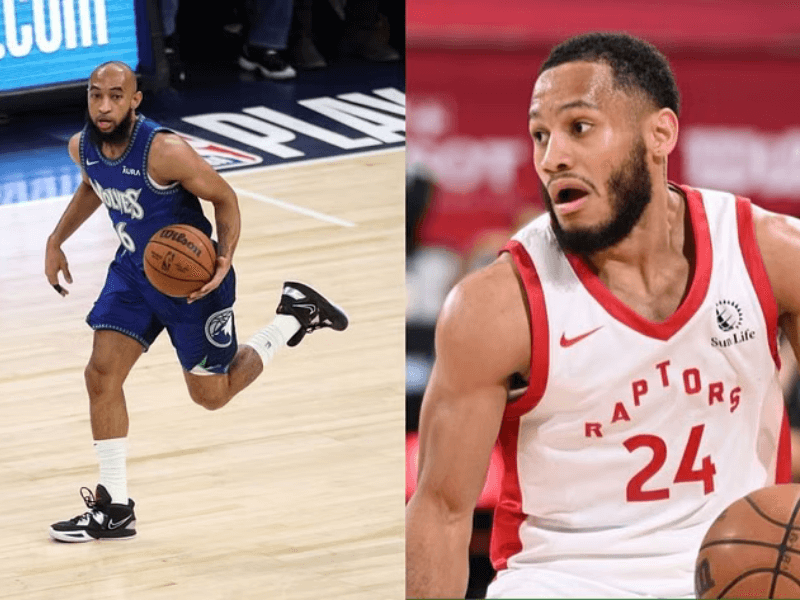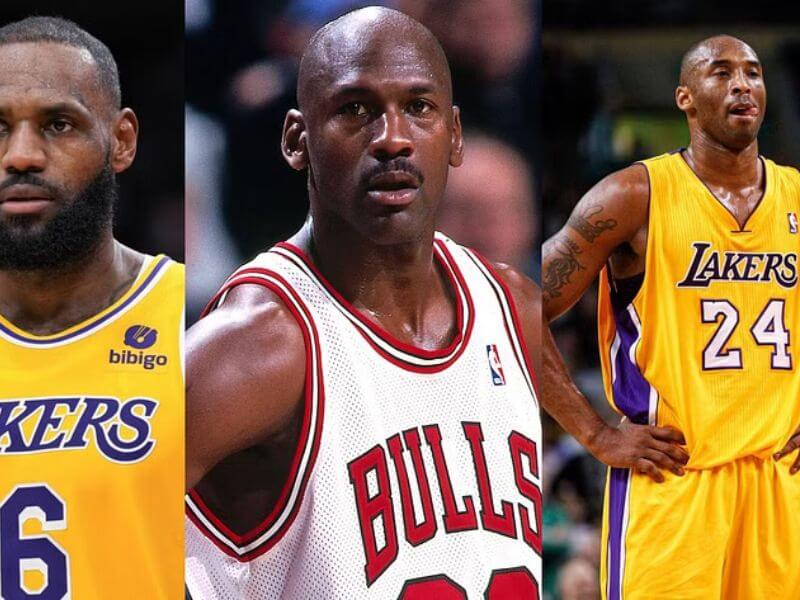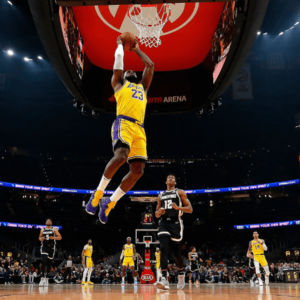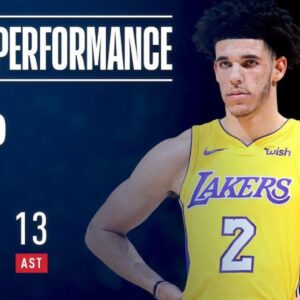What is goaltending in basketball? This week, MHSAA assistant director Brent Rice clears up misconceptions concerning backboards and basketball goaltending.
Be The Referee is a series of short messages designed to help educate people on the rules of different sports, to help them better understand the art of officiating, and to recruit officials.
One of the most misunderstood rules in basketball has to do with the backboard and goaltending.
Simply put, the backboard has nothing to do with goaltending. Goaltending is contacting the ball on its downward flight, with a chance to go in, while above the cylinder. On most layups, the ball is still going up after contacting the backboard. It’s legal to pin the ball against the backboard if it’s still on the way up and not in the cylinder above the basket.
Slapping the backboard is neither basket interference nor goaltending. A technical may be assessed when a player strikes the backboard so forcefully it cannot be ignored, but simply slapping the backboard in an attempt to block a shot is neither a violation nor a technical foul.

Why Is Goaltending Illegal?
Just like other basketball rules, goaltending is necessary for making games more competitive for players and more aesthetically pleasing for spectators. Consider other rules in basketball:
Dribbling is necessary because it slows down the fastest players when they have possession. In turn, offensive strategies and ball movement are required.
Fouls are necessary for enabling free movement of players and to allow better scoring opportunities.
The shot clock enforces a faster pace of play, requiring teams to have offensive and defensive strategies for the entirety of the game.
The same reasoning goes into the goaltending rule. In its early years, as basketball grew in popularity, taller and more athletic competitors began playing.
The possibilities grew for defensive players to alter shots that would otherwise score, and for offensive players to guide missed shots into the basket.
Like the three-second rule, the goaltending violation deters the tallest and most athletic players from affecting the sport disproportionately.
George Mikan and Bob Kurland are best known for influencing the ban of defensive goaltending in basketball. With each standing at 6’10”, Mikan and Kurland played defense by standing under the basket and grabbing opponents’ shots as they approached the rim. This made it nearly impossible for opposing teams to score.
Bill Russell is credited for causing the ban of offensive goaltending in basketball due to his dominance in college. With his length and leaping ability, Russell could anticipate teammates’ missed shots and steer them into the basket.
Had offensive goaltending been legal throughout Russell’s NBA tenure, he’d likely have much more than his career 21,620 rebounds – an absurd stat in its own right.
Without goaltending, imagine what some of the great modern big men would do! Would any team have scored on Shaquille O’Neal? Or Anthony Davis?
What Is the Penalty for Goaltending?
Both offensive and defensive players commit goaltending, so the punishment depends on who commits the penalty. With that said, defensive goaltending is much more prevalent than offensive goaltending.
When a defensive player goaltends, the opposing team is awarded points. This is based on the location from where the ball was shot. Goaltending a shot inside the three-point line results in two points for the offense; goaltending a shot behind the line results in three points.
In the box score, the shooter receives credit for the points and a made field goal.
Defensive goaltending penalties also apply if the shooter was fouled. If your teammate fouls the shooter and you block the shot while the ball is on a downward trajectory, that is a goaltending violation.
The opposing team is awarded points for the field goal attempt and is given a free throw. The timing of the whistle does not matter, either. Goaltending can still be assessed after the whistle is blown for a foul call.
If a defensive player commits goaltending on his opponent’s free throw attempt, a technical foul is assessed to the offending team.
Goaltending may be called after the horn has sounded. For example: if the shooter attempts a buzzer-beater before time expires, but a defensive player illegally blocks the shot after time expires, it is a goaltend.
When an offensive player goaltends, his team loses possession of the ball. When a field goal is made during or as a result of goaltending, the score does not count.
In the rare case that both teams commit goaltending on the same play, neither team is awarded any points, and possession is decided by a jump ball.
NBA Goaltending Rule
At a high level, goaltending is a basketball violation that occurs when a player illegally touches the ball or goal during a field goal attempt. Goaltending occurs in a variety of ways. The NBA defines each of the following actions as goaltending:
- Touching the ball or rim (basket ring) while the ball is sitting or rolling on the rim
- Hanging on the ring or net as the ball is passing through
- Touching the ball when it is above the rim and within the imaginary cylinder made by the rim
- Touching the ball when it has a chance to score, including when the ball is on an upward or downward flight on a field goal attempt or after the ball has touched the backboard
- Touching the net, backboard, or rim in a manner that causes the goal to move, thus causing the ball to bounce unnaturally
- Touching the ball while your hand is through the rim
These rules do not apply for a player who is dunking or attempting a layup, who has not yet released the ball from their hand(s).
Goaltending is not called if the ball does not have a reasonable chance of scoring. Officials may have discretion on what is considered a “reasonable chance.”
That said, it would likely be legal to snag an errant three-point attempt from the air if it misses the goal by six feet. In the NBA rulebook, the term “basket interference” is used interchangeably with goaltending.

When Was Goaltending Made a Rule in the NBA?
Before goaltending was made a rule in the NBA, it was adopted by the National Collegiate Athletic Association (NCAA). The rule, however, did not come about overnight. The NCAA took decades to add rules that leveled the playing field for competitors of average height and athleticism.
The sport existed for 40 years before the offensive three-seconds rule was created, then another 10 years before goaltending was banned. Defensive goaltending was officially prohibited by the NCAA in 1944.
Mikan’s sophomore campaign was likely the final straw that led to goaltending becoming an NCAA rule. The big man anchored a DePaul defense that held opponents under 40 points per game. Mikan also scored over 30% of DePaul’s points.
Upon NCAA inclusion, goaltending was adopted by the National Basketball League (NBL). When the NBL’s successor, the National Basketball Association, was formed in 1947, defensive goaltending was included in the first set of rules.
Offensive goaltending was prohibited in 1958, which gave Mikan a full decade to own the offensive glass with no inhibitors.
While the goaltending ban helped limit the powers of basketball’s early greats, it didn’t stop them. Kurland won two NCAA Championships and two Olympic Gold Medals. Mikan was a three-time NBA scoring leader and five-time NBA champion.
Russell is second all-time in rebounds and won 11 NBA Championships. For decades to come, basketball would be dominated by centers, but the goaltending rule helped keep their advantages in check.
Above is information what is goaltending in basketball. Hopefully, through the above content, you have a more detailed understanding of what is goaltending in basketball .Thank you for reading our post


